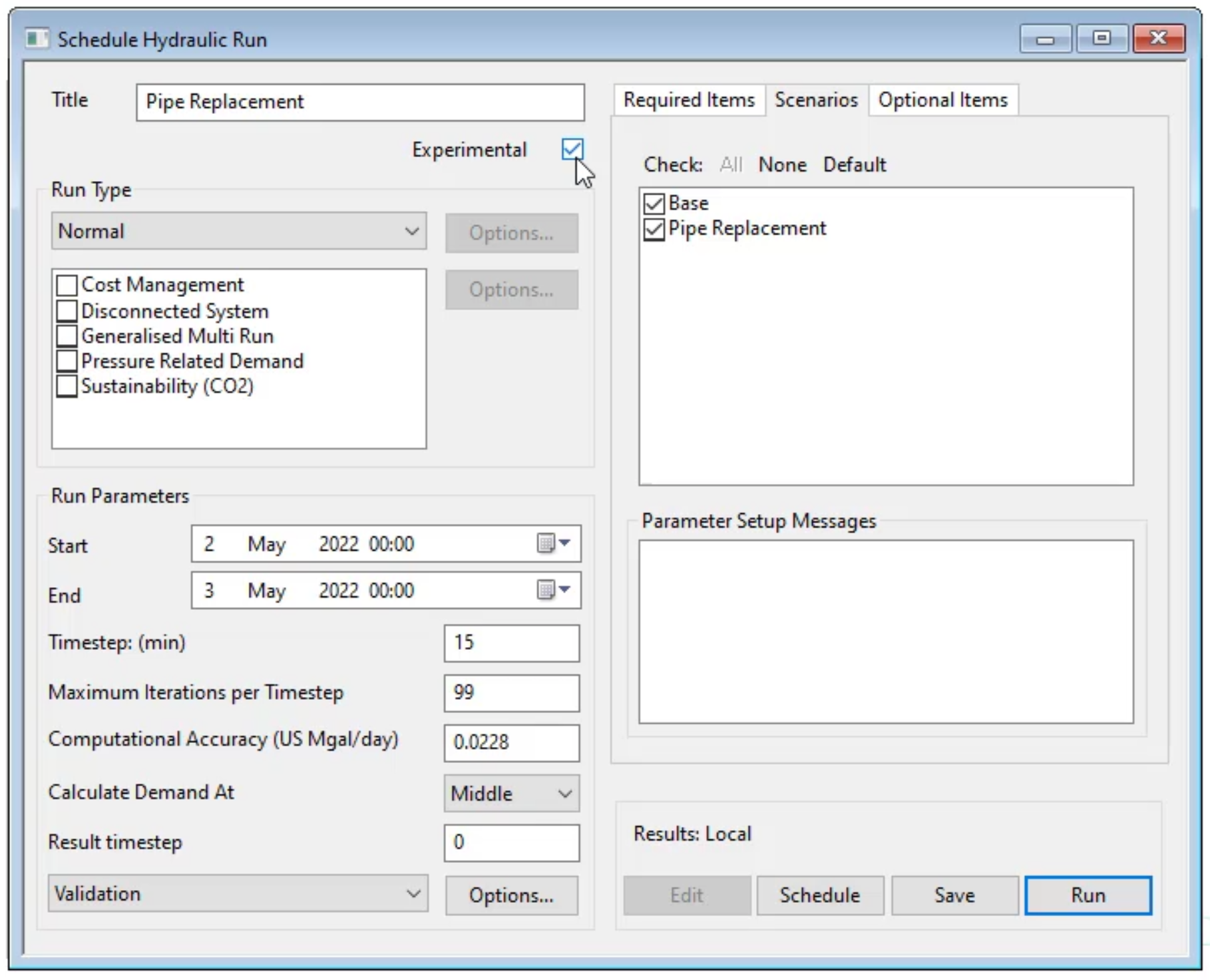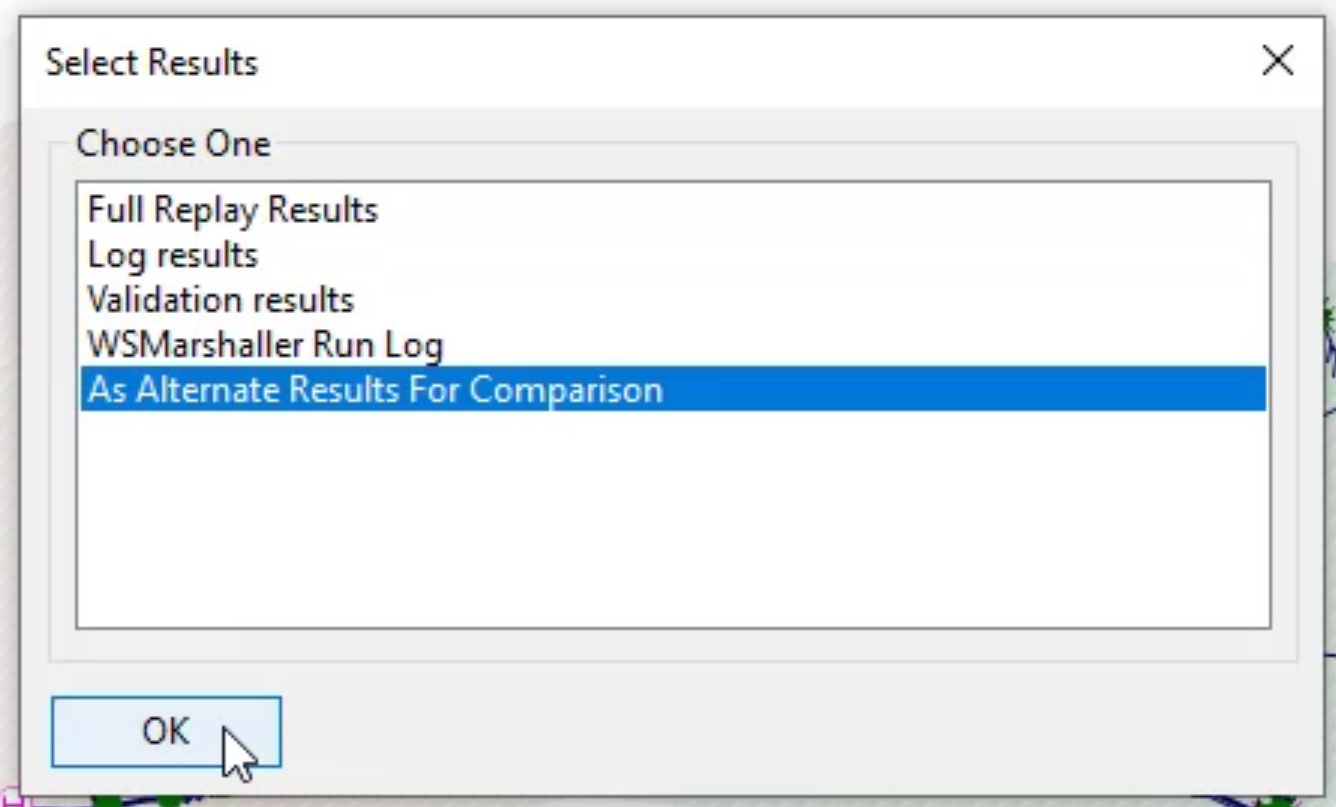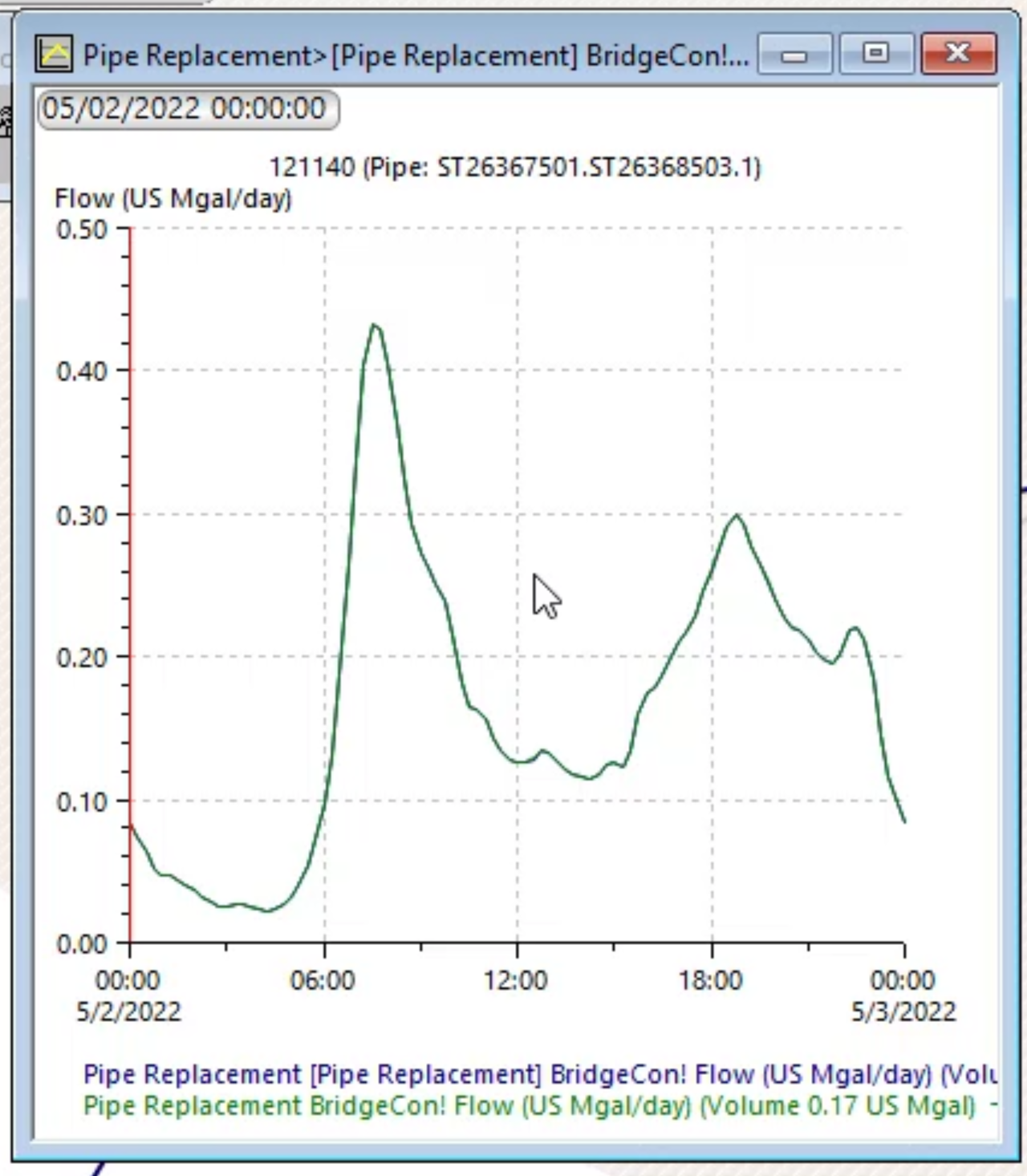& Construction

Integrated BIM tools, including Revit, AutoCAD, and Civil 3D
& Manufacturing

Professional CAD/CAM tools built on Inventor and AutoCAD
Transcript
00:04
In addition to creating scenarios, info works.
00:07
WS pro also gives you the ability to
00:10
perform hydraulic runs with multiple scenarios included.
00:14
When you include multiple scenarios in a run,
00:17
you can observe how they both performed during
00:19
the simulation by graphing the results simultaneously.
00:24
Best practice before creating a new run is to ensure you commit any changes,
00:29
right? Click the bridge net network
00:31
pick commit changes to database
00:34
and click. OK. In the following dialogue,
00:37
repeat this process for the control.
00:40
Be aware that committing these changes to the database
00:42
only overwrites the pipe replacement scenario but not the baseline
00:47
to create a new run with multiple scenarios in the model group window, right,
00:52
click run group, then select new run
00:56
in the schedule hydraulic run dialogue, enter pipe replacement in the title field,
01:01
then click and drag the bridge net network from
01:04
the model group window into the network group box.
01:09
Now click the scenarios tab and check the box next to pipe replacement.
01:14
You can choose to include the base scenario as it can
01:17
be convenient to have the run results for both packaged together.
01:22
Check the box next to experimental,
01:26
then click save and run
01:31
a notification appears telling you that this run will
01:34
perform two simulations and may take a long time.
01:37
Click, yes.
01:39
Once the icons for both entries under the pipe replacement run are green,
01:44
you can view the results,
01:47
you can click and drag either entry into an empty part of
01:50
the workspace window to view the results in the GEO plan.
01:53
In
01:53
this example, the second in the list is selected
01:57
now,
01:58
right click bridge con and select open as
02:03
in the dialogue, select as alternate results for comparison
02:07
and then click OK.
02:10
In the toolbar, click the graph tool
02:13
then in the results window zoom in and click
02:16
a section of pipe just downstream from the pipe.
02:19
You changed earlier
02:22
in the dialogue, select flow and then check the box next to graph alternate results.
02:28
Click OK.
02:30
A graph window opens showing the flow rates of both pipes.
02:34
The original and the new bypass pipe you created.
02:38
In this example,
02:39
there is little noticeable difference between the two
02:42
as both graph lines largely overlap each other.
02:46
If there were significant differences,
02:48
you would need to adjust variables like
02:50
flow rate or friction coefficient to compensate,
02:53
close the graph window and the results window.
00:04
In addition to creating scenarios, info works.
00:07
WS pro also gives you the ability to
00:10
perform hydraulic runs with multiple scenarios included.
00:14
When you include multiple scenarios in a run,
00:17
you can observe how they both performed during
00:19
the simulation by graphing the results simultaneously.
00:24
Best practice before creating a new run is to ensure you commit any changes,
00:29
right? Click the bridge net network
00:31
pick commit changes to database
00:34
and click. OK. In the following dialogue,
00:37
repeat this process for the control.
00:40
Be aware that committing these changes to the database
00:42
only overwrites the pipe replacement scenario but not the baseline
00:47
to create a new run with multiple scenarios in the model group window, right,
00:52
click run group, then select new run
00:56
in the schedule hydraulic run dialogue, enter pipe replacement in the title field,
01:01
then click and drag the bridge net network from
01:04
the model group window into the network group box.
01:09
Now click the scenarios tab and check the box next to pipe replacement.
01:14
You can choose to include the base scenario as it can
01:17
be convenient to have the run results for both packaged together.
01:22
Check the box next to experimental,
01:26
then click save and run
01:31
a notification appears telling you that this run will
01:34
perform two simulations and may take a long time.
01:37
Click, yes.
01:39
Once the icons for both entries under the pipe replacement run are green,
01:44
you can view the results,
01:47
you can click and drag either entry into an empty part of
01:50
the workspace window to view the results in the GEO plan.
01:53
In
01:53
this example, the second in the list is selected
01:57
now,
01:58
right click bridge con and select open as
02:03
in the dialogue, select as alternate results for comparison
02:07
and then click OK.
02:10
In the toolbar, click the graph tool
02:13
then in the results window zoom in and click
02:16
a section of pipe just downstream from the pipe.
02:19
You changed earlier
02:22
in the dialogue, select flow and then check the box next to graph alternate results.
02:28
Click OK.
02:30
A graph window opens showing the flow rates of both pipes.
02:34
The original and the new bypass pipe you created.
02:38
In this example,
02:39
there is little noticeable difference between the two
02:42
as both graph lines largely overlap each other.
02:46
If there were significant differences,
02:48
you would need to adjust variables like
02:50
flow rate or friction coefficient to compensate,
02:53
close the graph window and the results window.
InfoWorks WS Pro allows you to include multiple scenarios in a hydraulic run, and then compare their performance during the simulation by graphing their results simultaneously.
First, commit any changes to your current model:

Note: Committing these changes to the database only overwrites the currently active scenario.
To create a new run with multiple scenarios:

Notice that the Control and Demand Diagram group boxes populate automatically.

Note: This example includes the Base scenario, as it can be convenient to have the run results for both packaged together.

Note: In the Model Group window, under Pipe Replacement, the icons next to the scenarios turn green, indicating you can view their results.





Note: In this example, there is little noticeable difference between the two scenarios, as their graph lines largely overlap. If there were significant differences, you would need to adjust variables like flow rate or friction coefficient to compensate.
